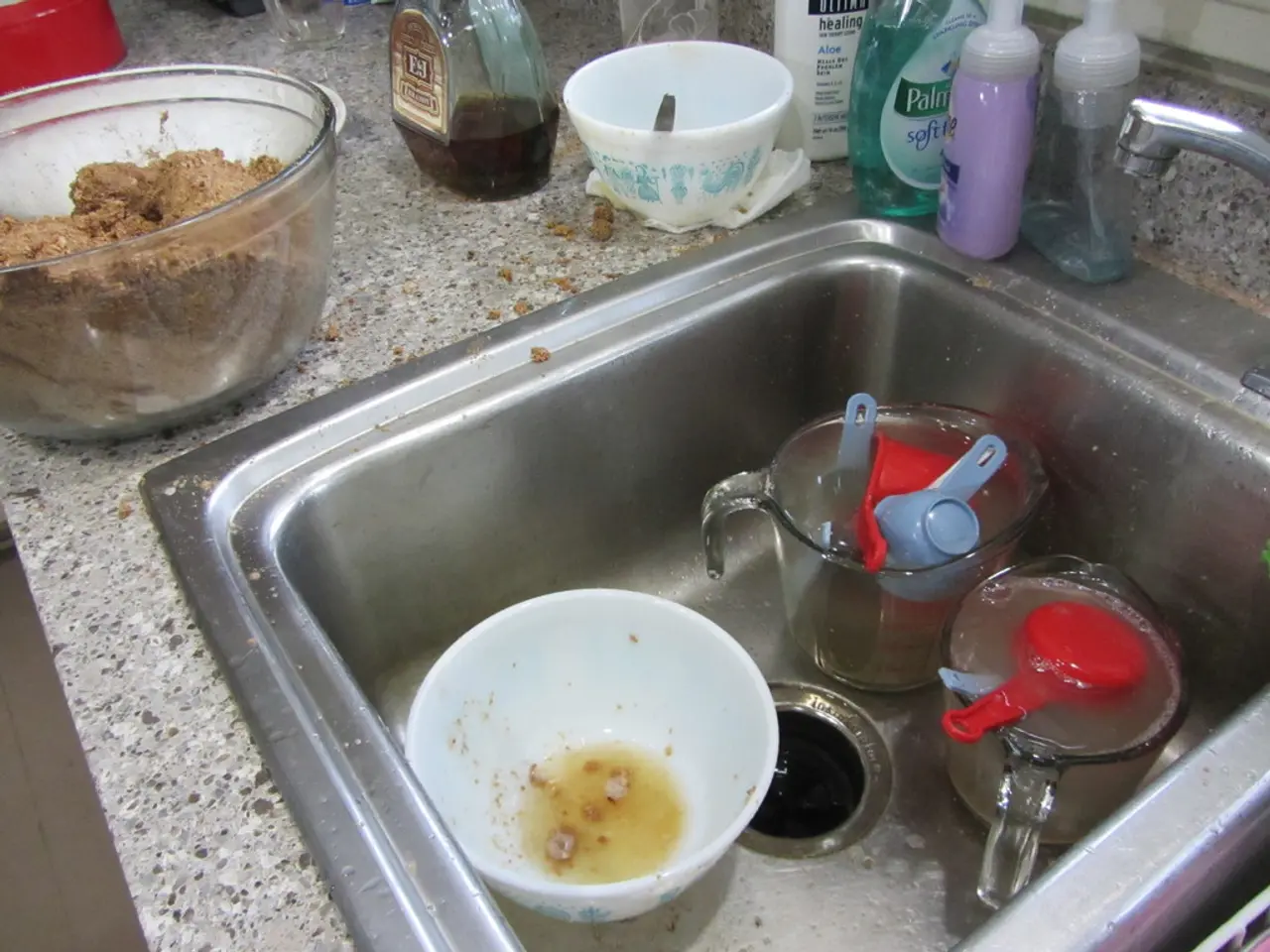Implementation of Chlorination in the Disinfection of Leafy Greens for Fresh Food Manufacturers
In the realm of food safety, maintaining the cleanliness of leafy green vegetables is of utmost importance. One effective method for achieving this is through the use of chlorinated water, a solution that acts as a potent disinfectant, eliminating bacteria and other pathogens on produce surfaces.
Two main commercially available chlorine sources for preparing chlorinated water are liquid sodium hypochlorite, commonly known as bleach, and calcium hypochlorite in solid or granular form.
Sodium hypochlorite solutions, typically around 12.5%, provide a stable, cost-effective, and eco-friendly chlorine source. This liquid form is widely used in industrial and food processing settings due to its strong oxidizing ability and ease of handling.
Calcium hypochlorite, on the other hand, is used as a solid or granular product that is dissolved in water to create chlorinated water. It is also widely employed for water chlorination in agriculture and food sanitation due to its high available chlorine content.
Preparing chlorinated water involves adding chlorine gas, calcium hypochlorite (Ca(ClO)), or sodium hypochlorite (NaOCl) to water. Calcium hypochlorite is available in granulated powder or compressed tablets and needs to be dissolved in water prior to treatment of fresh produce.
The effectiveness of chlorinated water depends on the pH of the solution, which should be between 6.5 to 7.5 to produce hypochlorous acid (HOCl). Sodium carbonate is added to raise the pH, while hydrochloric acid, vinegar, or sodium bisulfate is added to lower the pH.
It is essential to monitor the pH of the chlorinated water frequently and use a pH meter for an accurate reading. Adding EPA-approved surfactants can also help, as they reduce the surface tension of the water, allowing for a uniform distribution of chlorinated water on leaf surfaces and deeper penetration into pores.
After sanitation, fresh produce should be rinsed with a lower concentration (2 to 7 ppm) of chlorinated water to prevent recontamination by recirculated water.
Chlorine gas is stored in high-pressure tanks and requires close monitoring. Liquid sanitizers, however, may not have direct contact with all surfaces contaminated by bacteria in leafy green vegetables with a high surface area to volume.
It is important to note that food grade bleach, defined as sodium hypochlorite solution without any additives such as fragrances, stabilizers, or thickeners, is the only bleach approved by the EPA for use in food processing.
In summary, for leafy green vegetable sanitation, sodium hypochlorite (liquid bleach) and calcium hypochlorite (solid form) are the main commercially available chlorine sources used to prepare chlorinated wash water. Regular monitoring of the pH and the use of EPA-approved surfactants are essential to ensure the effectiveness of the sanitation process.





